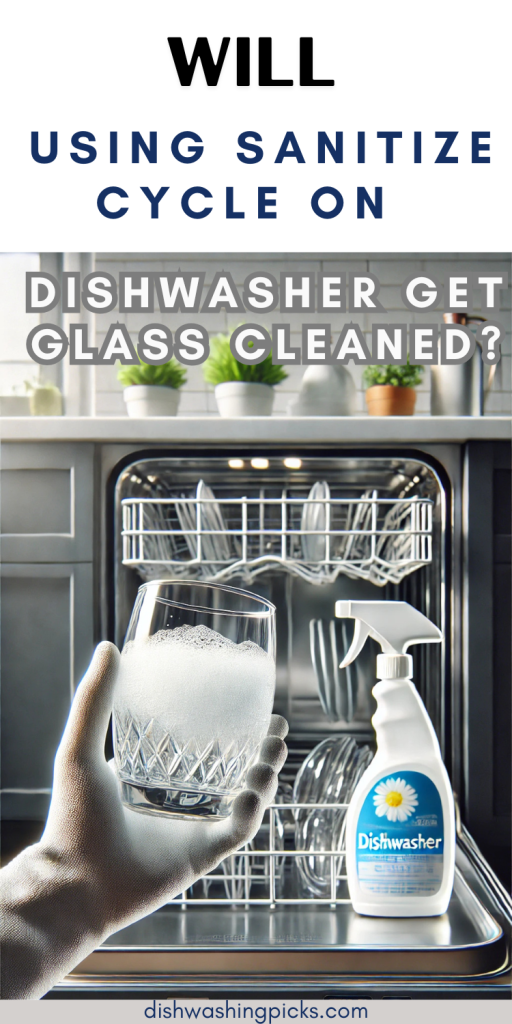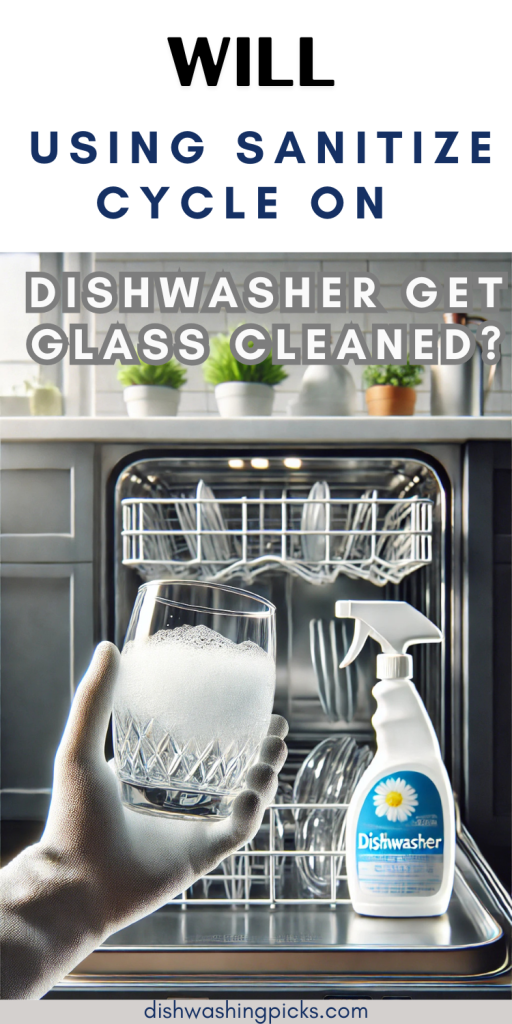
So, here’s the thing: you’ve got a dishwasher, and you’re feeling pretty good about it. You load up those glasses, hit the button, and boom—you expect them to come out sparkling clean, right? But then, there’s that moment of doubt—should I be using the sanitize cycle for better results?
Maybe you’ve heard that the sanitize cycle is the ultimate cleaning hero, and you’re wondering if it can do a better job of getting those glasses super clean and shiny. Maybe you’re even thinking, “Will this make my glasses less cloudy?”
Well, you’re not alone in wondering, and that’s exactly what we’re going to break down today. Let’s dive into the nitty-gritty of whether or not hitting that sanitize button will give your glasses that extra sparkle—or if it’s just another cycle that’s kind of…meh.
What Is the Sanitize Cycle, Anyway?
First off, let’s talk about what the sanitize cycle actually does. You’ve probably seen it on your dishwasher and wondered if it was just some fancy, marketing term. Nope! It’s a real thing, and it’s kind of a big deal when it comes to cleaning dishes. The sanitize cycle uses higher water temperatures (like really high, we’re talking 150°F or more) to kill off bacteria and germs, and it’s often part of the “final rinse” in the wash cycle.
The idea here is simple: if the water’s hot enough, it can wipe out bacteria and other nasties that might hang around after a regular wash. So, that sounds promising, right? But here’s the catch—does that mean it’ll magically fix everything? Well… not exactly.
So, Will the Sanitize Cycle Actually Make Your Glasses Cleaner?
Now, here’s where it gets interesting. The sanitize cycle definitely does help with cleaning by getting rid of bacteria, but when it comes to that dreaded white film or cloudiness that sometimes shows up on glasses, the sanitize cycle doesn’t do much for that. Bummer, right?
You’re probably thinking, “Wait a minute. If the sanitize cycle doesn’t fix the cloudy glasses, then what does?” Great question. And, honestly, there’s more to the story.
The white film you see is usually caused by hard water. If you’ve got hard water (which is pretty common), those minerals—like calcium and magnesium—don’t always dissolve fully in the dishwasher and can get left behind on your glassware. This happens whether you’re using the sanitize cycle or not.
So, while the sanitize cycle might leave your glasses extra clean in terms of bacteria, it won’t necessarily solve the issue of cloudiness. It’s like using a fancy detergent and expecting it to fix your socks when you actually need to replace them.
What Can You Do to Get Your Glasses Really Clean?
Alright, now that we’ve debunked the whole sanitize cycle magic for cloudy glasses, what’s the game plan? Let’s talk about some actual solutions to get your glasses looking sparkling.
- Vinegar to the Rescue:
If you’ve ever heard about using vinegar to clean your dishwasher, you’re on the right track. Try running a cycle with a cup of white vinegar in the top rack. It helps break down mineral deposits and keeps those pesky hard water stains at bay. - Rinse Aid:
This little addition is a life-saver. Rinse aid works by helping the water slide off your dishes more easily, which means fewer spots and no hard water buildup. Just pop some in the rinse aid dispenser, and you’re good to go. - Don’t Overload the Dishwasher:
I know, it’s tempting to cram everything in there, but overloading your dishwasher means water and detergent can’t reach everything properly. Make sure your glasses are spaced out enough to get a good rinse. - Regular Dishwasher Maintenance:
It’s easy to forget, but your dishwasher itself needs a little TLC every now and then. Run a dishwasher cleaner through the cycle once a month to clear out any gunk or mineral buildup in the machine. A clean dishwasher leads to cleaner glasses!
So, Should You Use the Sanitize Cycle or Not?
Here’s the bottom line: using the sanitize cycle on your dishwasher is great if you’re concerned about bacteria, germs, or making sure your dishes are sanitized for food safety. But when it comes to getting rid of that white film on your glasses, it’s not the magic solution.
If you’ve got hard water, a combination of vinegar, rinse aid, and regular maintenance is probably your best bet for sparkling, clear glasses.
So, should you use the sanitize cycle? Absolutely, if you want that extra layer of cleanliness and peace of mind. But if you’re aiming for perfectly clear glassware, make sure to tackle the hard water issue too.
So, there you have it. The sanitize cycle is a great tool for killing bacteria, but it’s not a miracle worker when it comes to getting rid of cloudy glasses. If you’re still dealing with film or spots, it’s time to focus on the water quality and try some of those other tricks—vinegar, rinse aid, and regular dishwasher care.
Just imagine: you open the dishwasher, pull out a glass, and it’s so shiny it practically blinds you. Now that’s a win. Keep experimenting, and your glasses will be looking better than ever!
And that’s a wrap on our dishwasher journey today! Hopefully, this helps clear things up—pun intended—and makes your next dishwasher cycle a little more successful.

